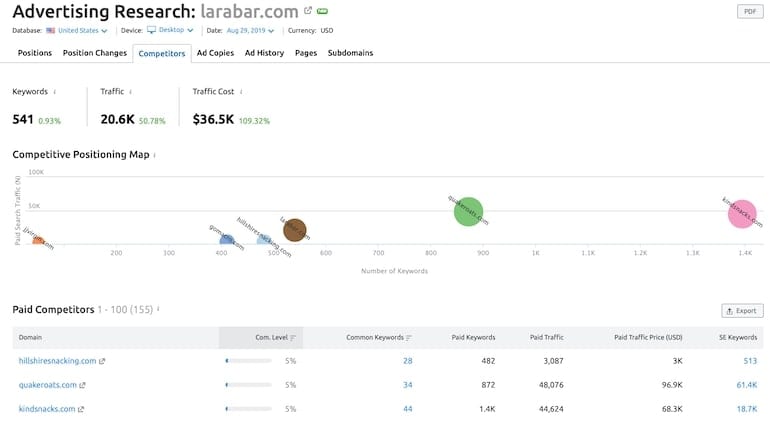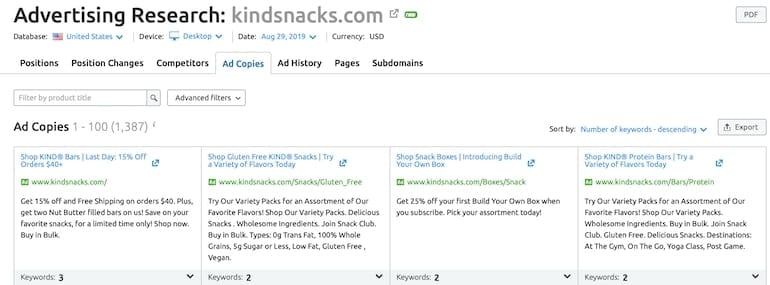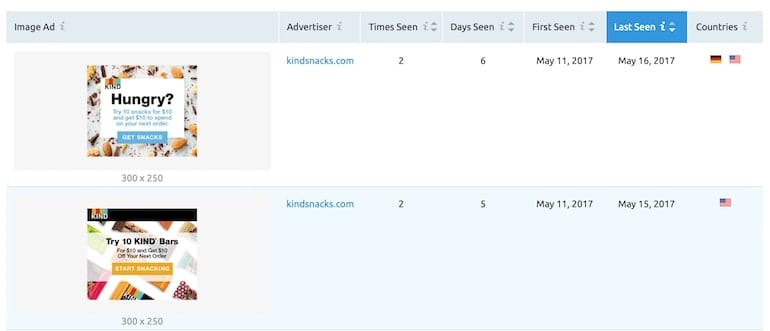Competitor analyses are an important piece of the conversion rate optimization puzzle. Understanding your competitor’s entire user journey can add a deeper understanding of your own site’s strengths and weaknesses, and just like your own site you should take into account the complete pre-click to post-click user journey. So how do you find your competitor’s ads? Doing a simple keyword search will sometimes show you who your competitors are in the SERP, but if you are not in the right location your search may yield little or no results. This is where competitor analysis tools come in handy. SEMrush can be used for a lot of analyses. This article will give you tips of where to focus on to find insights on your competitors.
If you are struggling to find your competitors in the first place, SEMrush can help give you a better picture of who your competitors are in the first place. Simply start with the Advertising Research tab under the Competitive Research section. From here you will find a list of paid competitors. This can give you an idea of who you should be looking at when beginning your competitor research. In this example run for larabar.com, you can quickly see three competitors (hillshiresnacking.com, quackeroats.com, and kindsnacks.com).

Now that you have your list of competitors, it’s time to dive into the fun part, actually looking at their ads and landing pages. While still under the Advertising Research section, begin by entering your competitor’s domain where you initially entered your own. From here you will find ad copies, as well as landing pages and subdomains if your competitors are using them. (Quick tip, subdomains are often, but not always, used to house paid landing pages separately from the main domain).

Another great area to find competitor ads and landing pages is with Display Advertising, under the Ad Research and Creation tab. From here you can find display ads, connected landing pages, as well as when the ad was first and last seen. This is a great way to make sure you are paying attention to ads that are still relevant. In this case for kindsnacks.com, you can see these ads are not.

A few things to consider as you look at competitors in SEMrush:
- Do the ads and landing pages match, for example, does the display image ad visually match the landing page the user is taken to?
- What type of language are competitors using to talk about similar products? This can be in the ad copy or on the landing pages.
- Do call-to-actions match from ad to landing pages?
SEMrush can be a fun tool to utilize for multiple types of analyses. For competitor research, start with these tips to ensure you don’t get lost down a rabbit hole of information. If you can’t get enough competitor research, check out this article for more competitor tools available.



